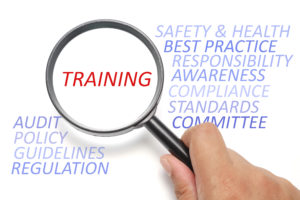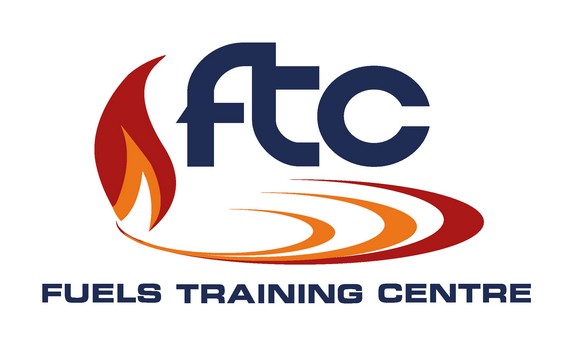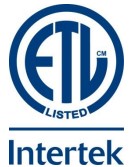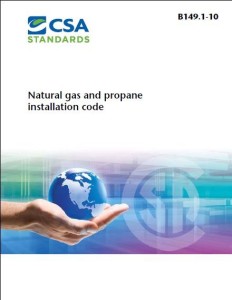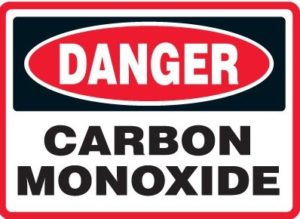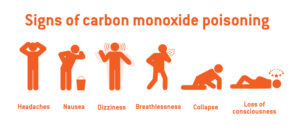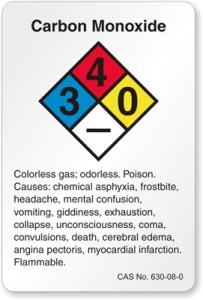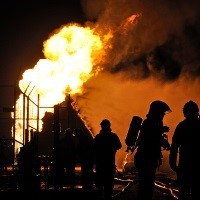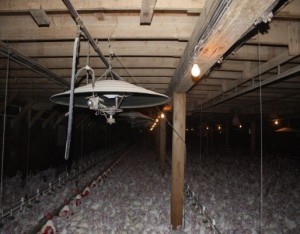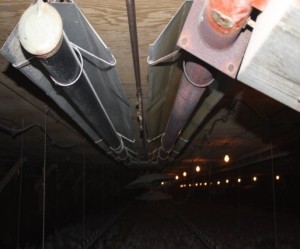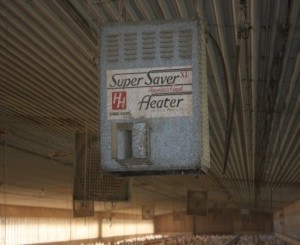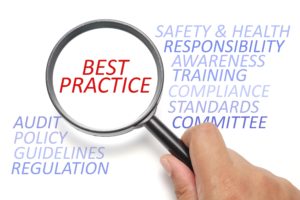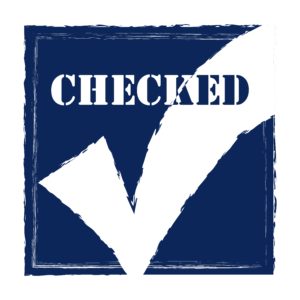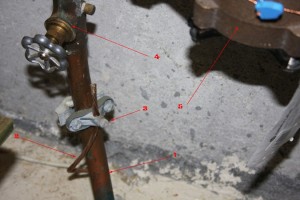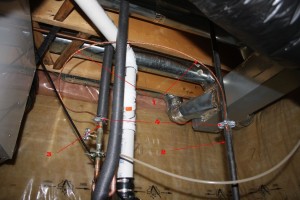This article, related to Changes in 2015 Version of B149.2 Propane Storage & Handling Code, first appeared in the May/June 2014 edition of Propane Canada magazine and was updated in October 2014.
In 2015, the Canadian Standards Association (CSA) will issue new versions of the B149 Codes scheduled for release by CSA in August 2015. The 2015 Codes are meant to replace the current 2010 Codes in use. For the propane technician working in the field, it can be a challenge to determine what has been deleted, added or amended, since the last Code was published.
This article provides a summary of the clauses that have been amended, added and deleted in the CAN/CSA B149.2 Propane Storage and Handling Code.
 The 2015 editions of the Codes are the completion of a 5-year code cycle that CSA uses to keep the Codes updated to address new technologies, new installation materials, and changing building environments. The committees who update the codes also consider changes to improve the usability of the document. Many of the amendments consolidate subjects so that a gas technician has to only look in one place for the requirements of a specific component. For example, the requirements for appliance installation, regardless of where the appliance is being installed, home or RV, are now in the CAN/CSA B149.1 Natural Gas & Propane Installation Code instead of being split between this code and the CAN/CSA B149.2 Propane Storage & Handling Code.
The 2015 editions of the Codes are the completion of a 5-year code cycle that CSA uses to keep the Codes updated to address new technologies, new installation materials, and changing building environments. The committees who update the codes also consider changes to improve the usability of the document. Many of the amendments consolidate subjects so that a gas technician has to only look in one place for the requirements of a specific component. For example, the requirements for appliance installation, regardless of where the appliance is being installed, home or RV, are now in the CAN/CSA B149.1 Natural Gas & Propane Installation Code instead of being split between this code and the CAN/CSA B149.2 Propane Storage & Handling Code.
The adoption of the 2015 Code is done by each province and territory separately with some Authorities Having Jurisdictions (AHJ) adopting the Codes immediately, and others taking several years. A person must use the most current Code adopted in their Province or Territory for new or upgrading propane installations. In addition, each Province or Territory can, when adopting the Codes add, amend or delete clauses from the Code by way of their Code Adoption Document (CAD).
Ontario Adopts 2015 Code
 Since this article was first published in Propane Canada magazine, the Technical Standards & Safety Authority (TSSA) issued an amendment to their Propane Code Adoption Document which is effective October 1, 2014. TSSA felt that new requirements in the 2015 version of the Code are considered important to be implemented in Ontario right away and addresses gaps in the current Code to enhance safety. In particular, the new requirements pertaining to cylinder use and storage at construction sites will become effective as of October 1, 2014.
Since this article was first published in Propane Canada magazine, the Technical Standards & Safety Authority (TSSA) issued an amendment to their Propane Code Adoption Document which is effective October 1, 2014. TSSA felt that new requirements in the 2015 version of the Code are considered important to be implemented in Ontario right away and addresses gaps in the current Code to enhance safety. In particular, the new requirements pertaining to cylinder use and storage at construction sites will become effective as of October 1, 2014.
The following is a summary of revisions included in the 2015 edition of the CAN/CSA B149.2 – Propane Storage & Handling Code.
Section 1 – Scope
The scope of the CAN/CSA B149.2 Propane Storage and Handling Code has been amended to remove sections that were transferred over to the CAN/CSA B149.1 Natural Gas and Propane Installation Code; namely the installation of appliances, equipment, components, accessories, and containers on highway vehicles, recreational vehicles, mobile housing, outdoor food service units, and wash-mobiles when propane is to be used for fuel purposes;
The scope has also been amended to include maintenance as a requirement for containers and equipment to be used for propane at customer locations, in distribution locations, and filling plants.
The section of the scope that identifies areas to which the Code does not apply was also amended to exclude transportation of propane and the manufacture, selection, and use of standardized means of containment under Transportation of Dangerous Goods (TDG) Act and Regulations
Item (j) of the exclusions was amended to exclude any equipment extending downstream from the inlet to any container pressure regulator, commonly referred to as the 1st stage regulator. The propane system downstream of the 1st stage regulator outlet is governed by the CAN/CSA B149.1 Natural Gas and Propane Installation Code.
The rationale for this change was that regardless of who owns the propane storage container, the propane distributor or customer, the container must be maintained. Safety requirements for systems and components should not be different for various owners.
Item (k) of the exclusions was also amended to exclude the installation of propane fuel system components and tanks on vehicles covered by CAN/CSA B149.5 Installation Code for Propane Fuel Systems and Tanks on Highway Vehicles.
Section 3 – Definitions
Section 3 of the Code provides definitions of terms used within the Code. A number of definitions were added or amended in the 2015 edition of the CAN/CSA B149.2 Propane Storage and Handling Code.
Aerosol Container (new)
A new definition for “Aerosol Container” was added which is to simplify parts of the Code and close the loophole created where restrictions are made on the manufacture, use or storage of TC 2P and TC 2Q specification aerosol containers. The same amendments are not carried over to include US DOT corresponding specification aerosol containers which are permitted by the TDG Regulations under specific conditions. New standards and specifications for aerosol containers under the TDG Regulations are planned.
A note added to the definition for aerosol containers states that pressure limits on aerosol containers in the TDG Regulations (1245 kPa at 55°C for 2Q and 1105kPa for 2P) exclude the use of 2P and 2Q containers for pure propane.
Connected For Use (new)
A new definition for “Connected For Use “was added to clarify whether or not cylinders that are properly connected to an appliance that is not running and which may or may not be turned on for use, are not in storage. Properly connected cylinders that remain connected for current, intermittent or future use, would not be subject to storage requirements.
Construction Site (new)
A new definition for “Construction Site” has been added to indicate that the handling of cylinders and propane apparatus in use or in storage at construction sites are subject to significantly differing situations.
Container
Definition of “container” was amended to remove reference to NGV. The term NGV (Natural Gas for Vehicle) is used many times in the B149.2, which is a code dedicated to propane.
NGV references are now located in the CAN/CSA B149.1 Natural Gas and Propane Installation Code. Also, the definition was modified to include the aerosol containers.
Container Refill Centre (Propane Service Station)
The definition for Container Refill Centre (propane service station) was amended to include “dispensing system” which is a new definition within the Code.
Dispensing System (new)
New definition “Dispensing System” and an amendment to the definition of “Kiosk” was created to clarify confusion within the code regarding exactly what a “dispenser” is. As a result, the word is used in various contexts throughout the code. It is proposed to clarify the definitions of the various uses of “dispenser” and then incorporate these into the code as required.
Filling Plant
The definition for “Filling Plant (bulk plant)” was amended to remove the words “and” & “or” so that the definition now states that such plants have bulk storage or container filling or vehicle transfer facilities on the premises.
The rationale provided stated it had recently come to the committee’s attention that there is a practice of transferring from rail cars to cargo liners, bulk trucks or other mobile storage vehicles, outside of a bulk plant. Presently there are no rules for how this is to be done in a safe manner. This proposed clause uses wording very similar to the accepted wording for truck-to-truck transfers since the two situations are somewhat analogous (see also revisions for 7.18.3).
Kiosk
New definition “Dispensing System” and an amendment to the definition of “Kiosk” to clarify confusion within the code regarding exactly what a “dispenser” is. As a result, the word is used in various contexts throughout the code. It is proposed to clarify the definitions of the various uses of “dispenser” and then incorporate these into the code as required.
Mass Gauge
The definition “Mass Gauge” was amended to remove the potential for the reader to conclude that there are no requirements for mass measurement gauges.
Propane Dispenser (new)
New definition for “Propane Dispenser” as part of a series of definition amendments to clarify the definitions of the various uses of “dispenser” and then incorporate these into the code as required.
Refuelling Station
The definition for “Refueling station” and “remote Dispensing Device” were deleted as they refer to natural gas installations, not propane. The definitions now exist in the CAN/CSA B149.1 Natural Gas and Propane Installation Code.
Tank
The definition for “Tank” was amended to remove reference to tanks used for NGV installations.
Tank Heater
The original definition for “Tank Heater” has been amended as well as a new definition to take into account indirect and direct gas-fired tank heaters.
Vapourizer
There are several types of vapourizers defined in the Code. Not all vapourizers are appliances as defined under the term “appliance” in B149.2 section 3. Electric vapourizers, for example, do not convert LP-Gas to useable energy. They use electricity to convert LP-Gas from the liquid phase to the vapour phase. Meanwhile, all direct-fired vaporizers are considered to be appliances by their very nature. The amendments add a definition to clarify the term “direct gas-fired tank heater” which is used in section 9 – Vaporizers.
Section 5 – General requirements for propane and propane equipment
Section 5 of the Code describes the general requirements for the storage and handling of propane and propane equipment. Changes to Section 5 in the 2015 edition affect the following sub-sections:
- 5.2 Container filling
- 5.10 Propane container restrictions
The following describes the specific parts within Section 5 which have changed within the 2015 edition of the Code.
Revision to Clause 5.2.3
This Clause is an exemption clause that exempts propane from being put into containers specifically designed for butane. The clause has been amended to provide the Transport Canada and CSGB Standards for cylinders that can be used for propane.
Revision to Clause 5.2.5
This clause was amended to clarify what standard a cylinder used for propane must meet for it to be used for anhydrous ammonia.
Revision to Clause 5.10
This clause originally restricted cylinders from being installed under any fire escape, stairway, or ramp used as a means of egress from a building. The clause has been amended to read “container” so the restriction applies to cylinders and tanks. As a result of this revision, Clause 6.5.13 was deleted.
Section 6 – Cylinder Systems
Section 6 of the Code describes the requirements for cylinder systems. Changes to Section 6 in the 2015 edition affect the following sub-sections:
- 6.1 Requirements for cylinders
- 6.2 Liquid level gauges on cylinders
- 6.4 Purging and filling of cylinders
- 6.5 Storage and use of cylinders at locations other than filling plants
- 6.6 Transportation of cylinders
- 6.8 Rooftop installation of cylinder systems
In addition, the following tables were amended in the 2015 edition:
- Table 6.3 Cylinder storage clearances
- Table 6.4 Storage of non-refillable cylinders in mercantile occupancies
- Table 6.5 Storage of non-refillable cylinders in the back stock (warehouse) area of mercantile occupancies
Revision to Clause 6.1.1
This clause specified that cylinders must be manufactured, tested, inspected, and marked in accordance with both CAN/CSA B339 Cylinders, Spheres, and Tubes for the Transportation of Dangerous Goods code and the TDG Regulations. The clause was amended to remove the TDG Regulations requirement so that the CSA is the prescribed standard to which cylinders must be inspected and qualified. The rationale for this amendment was that when a new edition of CSA B339 is published, the TDG Regulations and this Code may find themselves referring to different editions of CSA B339 potentially leading to confusion.
Revision to Clause 6.1.2
This clause was amended to harmonize with US requirements. NFPA 58 -2008 states that cylinders with 4 lb. (1.8 kg) through 40 lb. (18 kg) propane capacity for vapour service shall be equipped or fitted with a listed overfill protection device; the current Canadian requirement starts at zero, not 4 lbs. (1.8 kg) as in the US.
Revision to Clause 6.1.5
This clause has been amended to remove the previous requirements for the 10-year cylinder inspection and requalification from the Code. The clause now states that refillable cylinders shall not be refilled if they are due for requalification as prescribed by requirements of the CSA B339.
In addition, the exemption for cylinders in excess of 240 lb (110 kg) water capacity with a protective dome cover not requiring PRV replacement was removed to be consistent with the requirements of B339. This means that all cylinders built to B339 standards must have the PRV replaced during the 10-year requalification period.
Revision to Clause 6.1.7
This clause was amended to require that cylinders have a pressure relief valve installed that meets the requirements of CAN/CSA B340 – Selection and Use of Cylinders, Spheres, Tubes, and Other Containers for the Transportation of Dangerous Goods, Class 2.
New Clause 6.1.16
This clause clarifies requirements for storing cylinders.
New Clause 6.2.3
This clause was added to mirror the markings for a dip tube in CSA B339.
Revision to Clause 6.4.5
This clause was amended to clarify that Specification TC-39M and aerosol containers cannot be filled.
Revision to Clause 6.5.1.4
The clause deals with the number of aerosol containers and TC-39 non-refillable cylinders that can be stored in a dwelling. The clause was amended for correctness.
Revision to Clause 6.5.1.4
This clause was amended to remove maximum temperature to which a cylinder can be exposed. The temperature requirement is now located in new Clause 6.1.16.
Revision to Clause 6.5.1.14
This clause was amended to permit the storage of cylinders on roofs in accordance with Clause 6.5.3.9.
Revision to Clause 6.5.1.15
This clause was amended extensively to update guidelines for cage construction to reflect current acceptable practices and to provide clear minimum design criteria that allow innovation. The changes also ensure only well-ventilated cages are used. The present location of the affected clause is under 6.5.2 Cylinders stored outdoors for commercial or industrial use or sale; however, propane cylinders can be placed in cabinets or other containers on many other sites. Therefore in addition to providing guidance on how to properly construct just industrial and commercial cabinets, the clause will now have an effect on any storage cabinet housing propane. As a result of the amendments to Clause 6.5.1.15, Clause 6.5.2.4 was deleted from the Code.
New Clauses 6.5.2.7 and 6.5.2.7.2
These clauses have been added to address any confusion regarding the sighting and signage requirements for cylinder exchange equipment. Over the last ten years, there has been a rapid increase in the use of LP-gas cylinder exchange stations for consumer propane tanks. The next step of providing better accessibility to propane tanks was the introduction of automated exchange machines.
The code needed to address the requirements for automated exchange operations. The new requirements also address risks associated with the absence of the attendant so that automated operations can be conducted safely. The Clause wording is consistent with the National Fire Code proposals and NPGA dockets.
Revisions to Section 6.5.1
This section, which addresses cylinders not connected for use at construction sites has been extensively amended to clarify acceptable “outdoor” storage by identifying proper and safe storage options that reflect conditions on construction sites. It is based on the hazards rather than focusing on the location alone.
Revision to Clause 6.5.3.2
This clause has been amended to address specific requirements for cylinder storage on construction sites which also address worksite hazards.
New Clause 6.5.3.8
This new clause provides the requirements to be followed on construction sites when moving cylinders between floors and the storage of cylinders on roofs.
Revision to Clause 6.5.3
This clause has been amended to require that non-refillable cylinders be packaged in accordance with CSA B340 and marked in compliance with the provisions of the CSA B339.
Revision to Section 6.6
Transportation of cylinders has had a note added to the beginning of the Section stating that the transportation of propane falls under the TDG Regulations and that activity under the TDG Regulations must be satisfied when transporting cylinders.
Deletion of Clauses 6.6.2 through 6.6.7.
The requirements for protection of valves are prescribed in detail in Clause 4.2.2 of CSA B340-08. The clauses were deleted to avoid overlapping and potentially conflicting requirements.
Revision to Section 6.8
This section has been amended to have propane cylinders installed on the uppermost flat roof of a building. This amendment addresses cases where a housing building is in the shape of a stair, where the roof of one level is a terrace for the level above. Being on the roof of a typical building, in the case of a fire, no one has to cross the level where the cylinders are installed. This level of protection and isolation is lost in the case of a step-shaped building.
Revision to Table 6.3
The table was amended to delete the 20 lb. maximum cylinder size that may be stored at a cylinder exchange. The rationale provided is that due to a demand from RV customers, 30 lb. cylinders are being offered at exchange locations and that the safety concerns of 30 lb. cylinders are not different from those of 20 lb. cylinders. Maintaining the cabinet maximum capacity of 500 lb. (25 x 20 lb., or 16 x 30 lb., or combination thereof) maintains the same risk and requirements of a single full exchange cabinet.
Revisions to Tables 6.4 and 6.5
These tables were amended to clarify the volume of propane in non-refillable cylinders that can be stored in retail locations. The changes replace each phrase “net weight of cylinders” in tables 6.4 and 6.5 with “quantity of propane”.
Section 7 – Tank Systems, Filling Plants, and Refill Centres
Section 7 of the Code describes the requirements for tank systems, filling plant and refill centres. Changes to Section 7 in the 2015 edition affect the following sub-sections:
- 7.1 General
- 7.4 Excess-flow and back check valves
- 7.8 Installation of underground tanks
- 7.9 Discharge from tank relief valves
- 7.10 Location of consumer tanks
- 7.17 Container filling locations with provisions for container storage
- 7.18 Filling plants served by rail
- 7.19 Container refill centres
- 7.20 Dispensing System
- 7.22 Operations and Maintenance Procedures
- In addition, Table 7.5 (Location of Tanks at Filling Plant and Container Refill Centres) was amended in the 2015 edition.
Revision to Clause 7.1.10
When the liquid connections of horizontal or vertical tanks are manifolded together, the tops of the tanks shall be at the same horizontal level. Tanks that have liquid interconnections shall be installed so that the maximum permitted filling level of each container is at the same elevation. Vertical containers used in liquid service shall not be manifolded to horizontal containers. Vertical containers of different dimensions shall not be manifolded together. This revision addresses the concern that when two horizontal tanks are connected together by a common liquid line there may be instances when the larger of the two tanks is overfilled when the top of these tanks are not at the same horizontal level.
New Clause 7.4.8
This clause requires that any line utilized for product flow must have a flow capacity greater than the rated flow of the excess flow valve protecting the line.
Revision to Clause 7.8.8
A note was added to the clause recognizing that non-metallic tubing installed between metallic piping and an underground tank is acceptable as a dielectric joint. When a non-metallic line is used (typically polyethylene tubing) between the first stage regulator at the tank and the second stage regulator attached to a building there is no function served in using a dielectric union or other isolating fitting, because the polyethylene tubing is non-conducting and serves the purpose of isolating the tank and its fittings from the metal components of the building.
Revision to Clause 7.8.12
This clause has been amended to provide clearances for underground propane tanks with a capacity of 2,000 USWG or less from the building, property line, other underground services, and tanks.
New Clause 7.8.18
This clause provides underground clearances for tanks greater than 2,000 USWG.
New Clause 7.9.3
This clause now permits the discharge of a safety relief valve and other vent devices or lines to be vented within the dome, housing or curb box on underground propane tanks with a capacity of 2,000 USWG or less.
Revision to Clause 7.10.2
This clause has been amended to allow manifolded tanks with a capacity less than 125 USWG (475 L). The aggregate capacity is not used when determining separation distance to an important building, a group of buildings, or line of adjoining property that can be built upon. The largest single container in the manifolded system is used to determine the clearances required in Table 7.4.
Revision to Clause 7.10.3
This clause has been amended to remove the word “aggregate” from the clause. This provides clarification around the clearances required for tanks manifolded together to make a system as allowed in 7.10.2. This addresses issues in metropolitan areas where the 10-foot clearance to property lines cannot be met. Currently, on a bank of four 123 USWG (454 L) tanks technicians are basing their tank sets on the aggregate capacity of over 125 USWG (475 L) up to and including 1000 USWG (3800 L).
Revision to Clause 7.17.3
This clause has been amended to add the clarification that section 7.17.3 also applies to buildings housing vapourizers and that pressure relief discharges need to be located outside the building,
New Clause 7.18.3
This clause addresses the transfer of propane at a filling plant from a railcar to tank truck, tank trailer or cargo liner. The clause requires that Clauses 7.12 to 7.18 and 7.19.4 be met and that the approval of the authority having jurisdiction is needed. The clause addresses the issue of transferring from rail cars to cargo liners, bulk trucks or other mobile storage vehicles, outside of a bulk plant. The clause uses wording very similar to the accepted wording for truck-to-truck transfers since the two situations are somewhat analogous.
It should be noted that there could be confusion in terms of which authority has jurisdiction – the local Authority or Transport Canada since the unloading of railcars typically falls within the jurisdiction of Transport Canada.
New Clause 7.19.4.4
This clause permits the use of barriers other than those listed if it can be demonstrated that they provide an equivalent level of protection.
Revisions to Clause 7.20.2
This clause has been amended to permit additional methods to protect remote dispensing devices.
New Clauses 7:22 to 7:22.4.2
These new clauses prescribe operations and maintenance procedures. The purpose of the new clauses in the code is to provide a minimum standard for the operation and maintenance of propane facilities and equipment. The new clauses apply to tank systems, filling plants, container refill centres and other facilities where liquid propane is piped to a vapourizer or process.
Because there are many variables, it is not possible to prescribe a set of operation and maintenance procedures that will be adequate from the standpoint of safety in all cases, so the new clauses establish a baseline or minimum standard.
Revision to Table 7.5
This table has been expanded to provided distances for tanks up to 90,000 uswg. The rationale for this expansion is that with installations over 10,000 USWG, the local authorities use the table in the NFPA 58. This change is to provide the tool to the local authorities and to harmonize minimum distance requirements with NFPA 58.
Section 8 – Tank Trucks, Tank Trailers, and Cargo Liners
Section 8 of the Code describes the requirements for tank truck, tank trailer, and cargo liners. Several sub-sections and clauses have been deleted in the 2015 version of the code since the activities described fall under the jurisdiction of Transport Canada. The deleted sub-sections and clauses have been moved to the CAN/CSA B620 – Highway Tanks and TC Portable Tanks for the Transportation of Dangerous Goods code as follows:
- 8.2 Tank equipment on tank trucks, tank trailers, and cargo liners
- 8.3 Pumps and compressors on tank trucks and cargo liners
- 8.4 Piping, tubing, hose, and fittings on tank trucks, tank trailers, and cargo
- 8.6 Braking systems and chock blocks
- 8.7 Exhaust systems
- 8.9 Fire extinguishers
- 8.10 Tank truck and cargo liner lettering
- 8.11 Towing tank trailers
- 8.12 Filling of tank trucks, tank trailers, and cargo liners
Changes to Section 8 in the 2015 edition of the Code affect the following sub-sections:
- 8.1 General
- 8.12 Filling of tank trucks, tank trailers, and cargo liners
- 8.13 Operation of tank trucks, tank trailers, and cargo liners
- 8.14 Parking vehicles used to transport propane
- 8.18 Repair or servicing in repair garages
Revision to Clause 8.1.1
A note has been added to this clause to explain that the requirements for design, manufacture, repair, inspection, test, marking, selection, and use of tank trucks, tank trailers, cargo liners, and portable tanks for transporting propane are prescribed by the Transport Canada’s Transportation of Dangerous Goods Regulations.
Revision to Clause 8.12.3
This clause was amended to disallow truck to truck transfers unless it is an emergency or specifically approved by the AHJ. This amendment allows the Authority Having Jurisdiction to approve truck-to-transfers in certain geographic regions within Canada where truck to truck transfers are necessitated by the need to deliver propane under uniquely difficult circumstances such as:
- Coastal and island delivery where barges are used to transport propane bulk trucks to customer sites. Bulk trucks are refilled without being removed from the barge.
- Delivery of propane to wellheads where the rugged terrain prevents highway bulk trucks from traveling directly to the propane tank locations. Bulk trucks specifically designed to handle the terrain are refilled by highway bulk trucks.
- Delivery to logging camps and asphalt plants within the interior at certain times of the year requires that truck to truck transfers take place between the highway bulk truck and bulk trucks designed to travel rough unassumed interior roads.
New Clause 8.12.4
This new clause allows the content of a rail car may be transferred to a tank truck, tank trailer or cargo liner other than at a filling plant when approved by the authority having jurisdiction.
It should be noted that the code refers to the provincial regulator, not Transport Canada, who actually has jurisdiction over this practice.
Deleted Clause 8.13.1
The clause was deleted since the requirements for the operation of highway tanks (tank trucks, tank trailers and cargo liners) are within the scope of the TDG Regulations and included in CSA B620, CSA B621 and CSA B622 for all highway tanks.
New Clause 8.14.7
This clause requires that a tank truck, tank trailer, or cargo liner used for storage comply with Clause 7. The new clause addresses safety issues associated with parking of vehicles carrying propane for longer periods of time.
Deleted Clause 8.18.3
This clause, which dealt with repair work performed on a tank or tank equipment of a tank truck or cargo liner was deleted since the repair work is governed by TDG Regulations.
Section 9 – Vapourizers
Section 9 of the Code describes the requirements for vapourizers. Changes to Section 9 in the 2015 edition affect the following sub-sections:
- 9.1 General
- 9.2 Indirect vaporizers
- 9.4 Tank Heaters
New Clause 9.1.10
This clause requires that an emergency shutdown system must be installed in any tank system supplying propane to direct-fired vapourizers.
Revision to Clause 9.2.3
This clause has been amended to require the heating medium piping for an indirect vapourizer to be provided with backflow preventers and phase separators to prevent the flow of propane into such piping.
New Clause 9.2.5
This clause stipulates that if the heat source of an indirect-fired vapourizer is a source of ignition, is not certified for hazardous locations, and is located within 15 ft (4.5 m) of the vapourizer, the vapourizer and its heat source must be installed as a direct-fired vapourizer.
New Clauses 9.4 to 9.4.10
These clauses support the new definitions of vapourizers. These Clauses provide further constraints around tank heaters while also specifying the proper requirements for safe installation and use of acceptable types of tank heaters.
Section 10 – Propane as an Engine Fuel
Section 10 of the Code describes the requirements for propane as an engine fuel. A number of sub-sections and clauses were deleted in the 2015 edition of the code and moved to the CAN/CSA B149.5 – Installation Code for Propane Fuel Systems and Tanks on Highway Vehicles. Deletions, including entire sub-sections, or specific clauses affect the following sub-sections:
- 10.1 General
- 10.2 Engine fuel containers
- 10.3 Engine fuel piping, tubing, hose, and fittings
- 10.4 Engine fuel container equipment
- 10.5 Hydrostatic relief valves
- 10.6 Engine fuel vaporizers (converters)
- 10.7 Engine fuel regulators and valves
Section 11 – Installation of appliances, equipment, and containers on highway vehicles, recreational vehicles, mobile housing, outdoor food service units, and wash-mobiles
Section 11 of the Code describes the requirements related to the installation of appliances, equipment, and containers on highway vehicles, recreational vehicles, mobile housing, outdoor food service units, and wash-mobiles. Most of the sub-sections and clauses in this Section have been deleted in the 2015 version of the code. These sub-sections and clauses have been moved to either the CAN/CSA B149.5 – Installation Code for Propane Fuel Systems and Tanks on Highway Vehicles code or CAN/CSA B149.1 – Natural Gas and Propane Installation Code.
This section will also be renamed to “Installation of equipment, and containers on highway vehicles, recreational vehicles, outdoor food service units, and wash-mobiles”. The remaining sub-sections and clauses will be renumbered in the 2015 edition of the code.
Annex M – Risk and Safety Management Plans (non-mandatory)
A new Annex has been added to the CAN/CSA B149.2 Propane Storage and Handling Code. Risk and Safety Management Plans (RSMPs) are formal plans used to manage the risk of incidents that could result in negative consequences to like and property. The Annex specifies the approach, the management components, and resources to be applied to the management of risk. There are four primary elements of Risk and Safety Management Plans:
- Hazard Analysis
- Risk Assessment
- Risk Mitigation & Control
- Emergency Response & Preparedness
View PDF
 Ontario has issued an Ontario Code Adoption Document (CAD) for both 2010 editions of B149.1 and B149.2 codes which become effective October 1, 2014. The CAD adopts many of the changes that will appear in the 2015 editions of the B149.1 and B149.2 codes. The CADs are available on the TSSA website for download. Significant changes made by the Gaseous Fuels amendment include:
Ontario has issued an Ontario Code Adoption Document (CAD) for both 2010 editions of B149.1 and B149.2 codes which become effective October 1, 2014. The CAD adopts many of the changes that will appear in the 2015 editions of the B149.1 and B149.2 codes. The CADs are available on the TSSA website for download. Significant changes made by the Gaseous Fuels amendment include:
